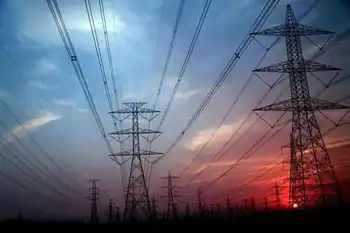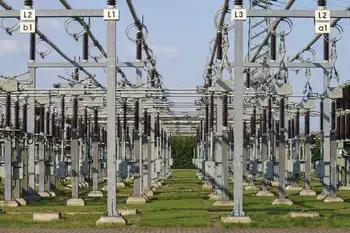Los Angeles will end use of coal-fired power
By Reuters
CSA Z463 Electrical Maintenance
Our customized live online or in‑person group training can be delivered to your staff at your location.

- Live Online
- 6 hours Instructor-led
- Group Training Available
Consumers of the Los Angeles Department of Water and Power, the largest city-owned utility in the United States with 1.45 million electricity customers, will see higher power bills in the fight against climate change, he added in his inaugural speech for his second four-year term as mayor.
California does not have any coal-fired power plants, a leading contributor to greenhouse gas pollution, but the LADWP now gets 40 percent of its electricity from coal plants outside the state.
"LADWP will deliver 40 percent renewable power, with the remainder coming from natural gas, nuclear, and large hydroelectric," said Villaraigosa.
Coal and natural gas-fired power now account for 76 percent of the electricity delivered by the LADWP. By 2020, the LADWP expects to cut its carbon emissions by up to 60 percent from 1990 levels, according to the mayor's office.
Villaraigosa said the LADWP will meet its goal of getting 20 percent of its power from renewables by 2010.
"We applaud Mayor Villaraigosa's bold decision to move Los Angeles beyond coal," said Bruce Nilles, director of the Sierra Club's efforts to end coal-fired power plants. "The decision to replace coal with cleaner energy alternatives is key to boosting job creation and economic growth."
The LADWP also wants to cut overall electricity use by 1 percent a year for the next 10 years, Freeman said, through energy efficiency.
Deputy Mayor David Freeman said the LADWP will continue to use power from the coal-fired 2,250-megawatt Navajo Generating Station in Arizona until 2019 when its current contract expires. It takes 21.2 percent of the plant's output.
Freeman, the one-time head of the federal Tennessee Valley Authority, said negotiations have not yet begun on how and when the LADWP will leave its contract as lead owner of the 1,800-megawatt coal-fired Intermountain plant in Utah.
It takes 44.6 percent of the output of Intermountain in a contract that extends to 2026.
Together, Navajo — 477 MW — and Intermountain — 803 MW — can deliver as much as 1,280 MW of power to Los Angeles.
Villaraigosa and Freeman said the elimination of coal-fired power will also mean higher electricity rates. LADWP customers pay an average of about 12 cents per kilowatt-hour.
Freeman said eliminating power from coal will one day increase rates but they will remain competitive with the 15.5 cents per kwh of the average Southern California Edison customer. SCE, a unit of Edison International, has nearly 4.9 million power customers and covers Los Angeles County outside of the city of Los Angeles.
The Navajo plant can deliver power at 3 cents per kwh, and the Intermountain power is between 4 to 5 cents per kwh.
Freeman said that coal power costs will rise as rules limiting carbon dioxide, including a cap-and-trade system, are implemented.
But "costs to society" such as higher medical bills for lung-related diseases, including asthma, will drop.
"The rates are going to go up," said Freeman. "There is no way you can bring in renewable energy and not have some rate impact when you replace coal. But the value to society even aside from global warming is going to be positive."











